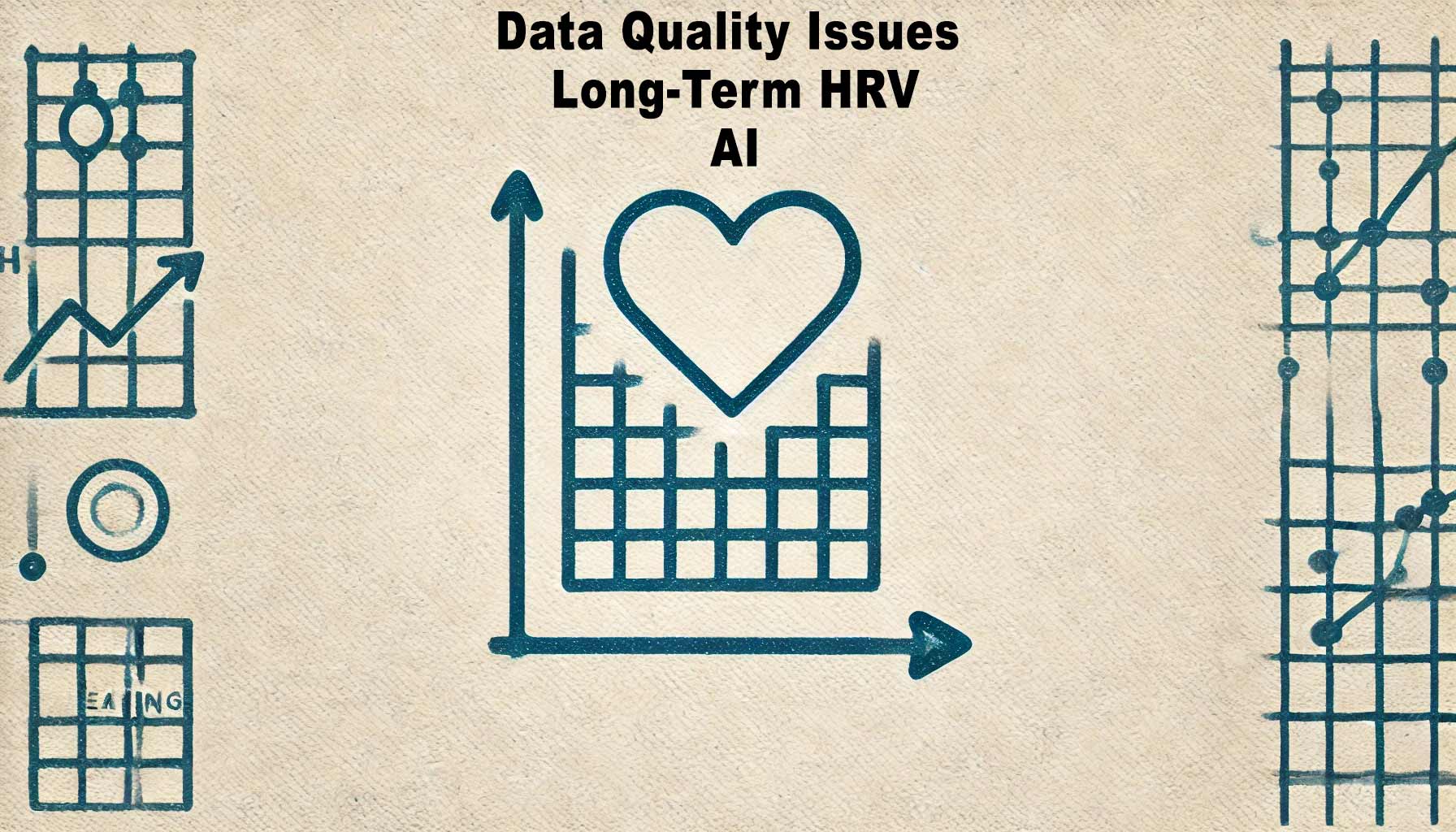I. Introduction
The Importance of Data Quality in Long-Term HRV Research
High-quality data is the backbone of robust Heart Rate Variability (HRV) research, especially in long-term studies where the accuracy and reliability of measurements are crucial. However, maintaining data quality over extended periods poses significant challenges. Common issues such as signal noise, missing data, and variability in data collection methods can compromise the integrity of HRV datasets, leading to inaccurate results and undermining the validity of research findings.
How AI Can Enhance HRV Data Integrity
AI techniques offer promising solutions to these challenges by automating data cleaning, imputation, and standardization processes. Through advanced algorithms, AI can enhance data quality, ensuring that HRV studies yield reliable insights into autonomic function, cardiovascular health, and other related outcomes. This article explores common data quality issues in long-term HRV research and discusses how AI-driven approaches can effectively address these challenges.
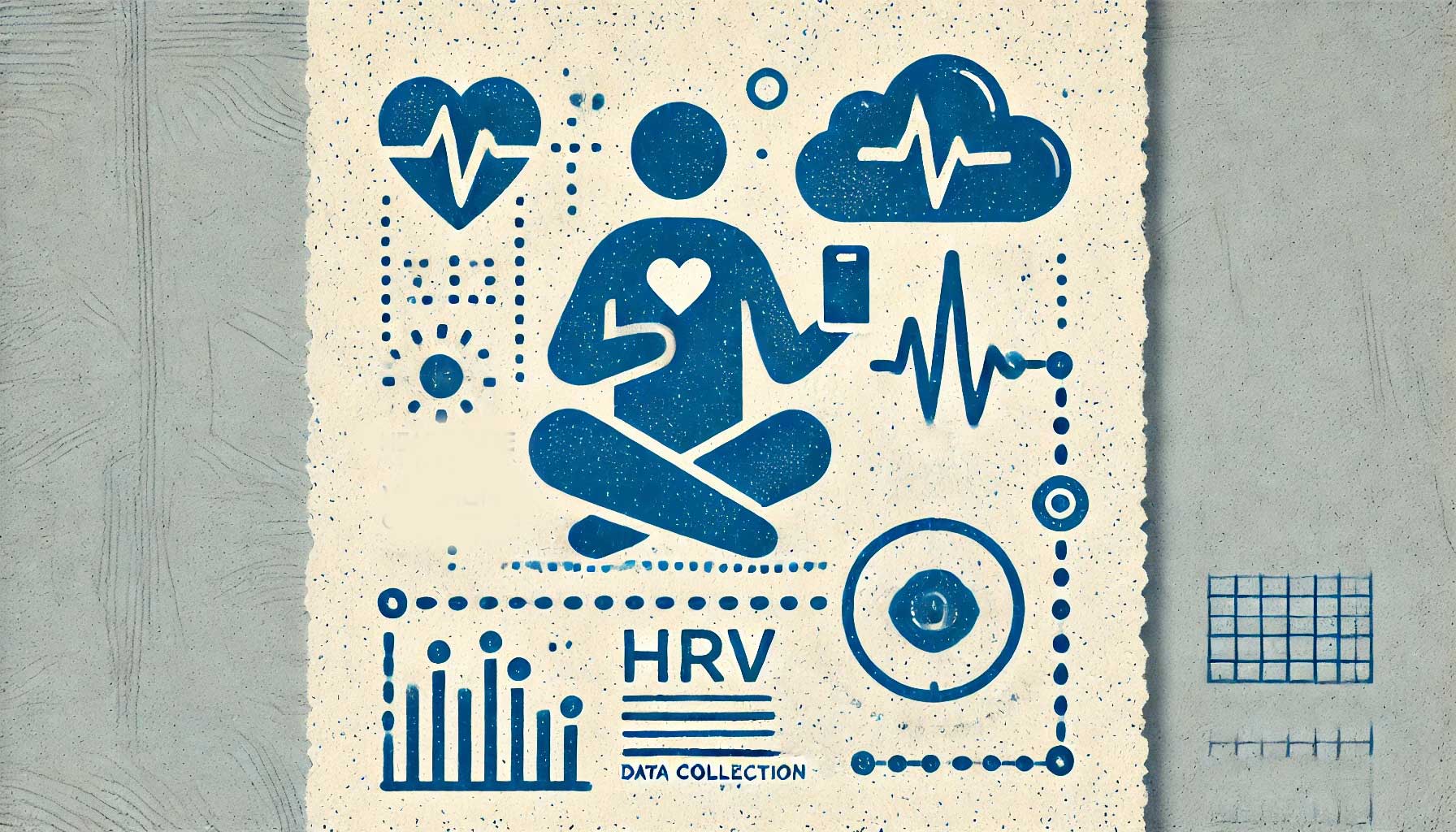
II. Common Data Quality Issues in Long-Term HRV Research
A. Signal Noise and Artifacts
Signal noise and artifacts are among the most prevalent issues in HRV research, often caused by:
- Motion artifacts: Movements such as walking, talking, or even deep breathing can introduce noise into HRV recordings, distorting the true signal.
- Electrode misplacement: Incorrect placement of ECG electrodes or loose contacts can lead to inconsistent or poor-quality signals.
- Environmental interference: External factors like electrical noise from surrounding devices can further contaminate HRV data.
Impact: These disturbances can significantly affect the accuracy of HRV metrics, leading to misinterpretation of autonomic function or erroneous conclusions about health outcomes.
B. Missing Data and Data Gaps
Long-term HRV studies often face challenges with missing data, which can arise from:
- Sensor failures: Devices may malfunction or run out of battery, resulting in incomplete data capture.
- Non-compliance: Participants might remove wearable sensors or fail to recharge devices, leading to data gaps.
- Transmission errors: Problems with data transmission, especially in wireless setups, can cause loss of data packets.
Impact: Missing data can bias results, reduce statistical power, and complicate the training of AI models, which often require complete datasets for optimal performance.
C. Variability in Data Collection Methods
Inconsistent data collection methods can introduce variability that complicates the analysis of HRV data:
- Different sensor types: Using various types of sensors (e.g., chest straps, wrist-worn devices) with different sensitivity and accuracy levels.
- Variations in sampling rates: Differences in how frequently devices sample HRV data can lead to inconsistencies that affect data comparability.
- Site-specific protocols: Multi-center studies may face challenges with standardizing data collection protocols across different locations.
Impact: Such variability can make it difficult to integrate data from multiple sources, reducing the overall robustness of the study findings.
By understanding these common issues, researchers can better appreciate the importance of implementing AI-driven solutions to enhance HRV data quality. The next section will explore how AI techniques can be employed to mitigate these challenges, ensuring more reliable and accurate HRV research outcomes.

III. AI-Based Solutions for Improving HRV Data Quality
AI techniques offer a range of solutions to address the data quality issues commonly encountered in long-term HRV research. By automating processes like noise reduction, data imputation, and standardization, AI helps researchers enhance the reliability and accuracy of their HRV datasets.
A. Noise Reduction and Signal Cleaning Using AI
AI algorithms, such as deep learning models, are highly effective in filtering out noise and removing artifacts from HRV signals. These algorithms can differentiate between true physiological signals and noise, ensuring that the cleaned data reflects accurate autonomic function.
- Deep Learning Models (e.g., Autoencoders, CNNs): These models can learn the underlying patterns of clean HRV signals and use this knowledge to filter out noise. Autoencoders, for instance, are trained to compress data into a lower-dimensional space and then reconstruct it, effectively removing irrelevant noise during the process.
- Signal Decomposition Techniques: AI can also employ advanced signal processing techniques, like Empirical Mode Decomposition (EMD) combined with neural networks, to isolate and remove noise from HRV data while preserving the integrity of the original signal.
Benefits: AI-driven noise reduction improves the quality of HRV data, leading to more accurate analyses and reducing the likelihood of misinterpretation caused by artifacts.
B. Imputation Techniques for Handling Missing Data
AI offers sophisticated methods for handling missing data, which is a common issue in long-term HRV studies. Unlike traditional imputation methods that rely on simple averages or linear interpolation, AI-based approaches can better capture the complex dependencies in HRV data.
- Machine Learning Regression Models: Algorithms such as Random Forests or Support Vector Regression can predict missing values based on observed patterns in the data, providing a more accurate imputation than basic methods.
- K-Nearest Neighbors (KNN) Imputation: This technique uses the nearest data points to fill in gaps, ensuring that the imputed values are similar to actual observations, thereby preserving the data’s overall distribution.
- Deep Learning Approaches: More advanced models, like LSTM networks, can handle time-series data and predict missing HRV values by learning from long-term dependencies in the data.
Benefits: AI-driven imputation techniques enhance the completeness and continuity of HRV datasets, allowing researchers to maintain the integrity of their analyses despite missing data points.
C. Standardizing and Harmonizing Data from Multiple Sources
AI can also play a crucial role in standardizing and harmonizing HRV data collected from different devices and settings, making it easier to integrate and compare across studies.
- Transfer Learning and Domain Adaptation: These AI techniques allow models trained on one type of dataset to adapt to another, facilitating the integration of HRV data from diverse sources with varying characteristics.
- AI-Based Calibration: Algorithms can be used to calibrate data from different sensors, adjusting for discrepancies in sampling rates, sensor types, and placement, thereby harmonizing the datasets for comparative analysis.
Benefits: By standardizing HRV data, AI ensures that studies conducted across different sites or using various devices produce comparable results, enhancing the overall validity of multi-center research.
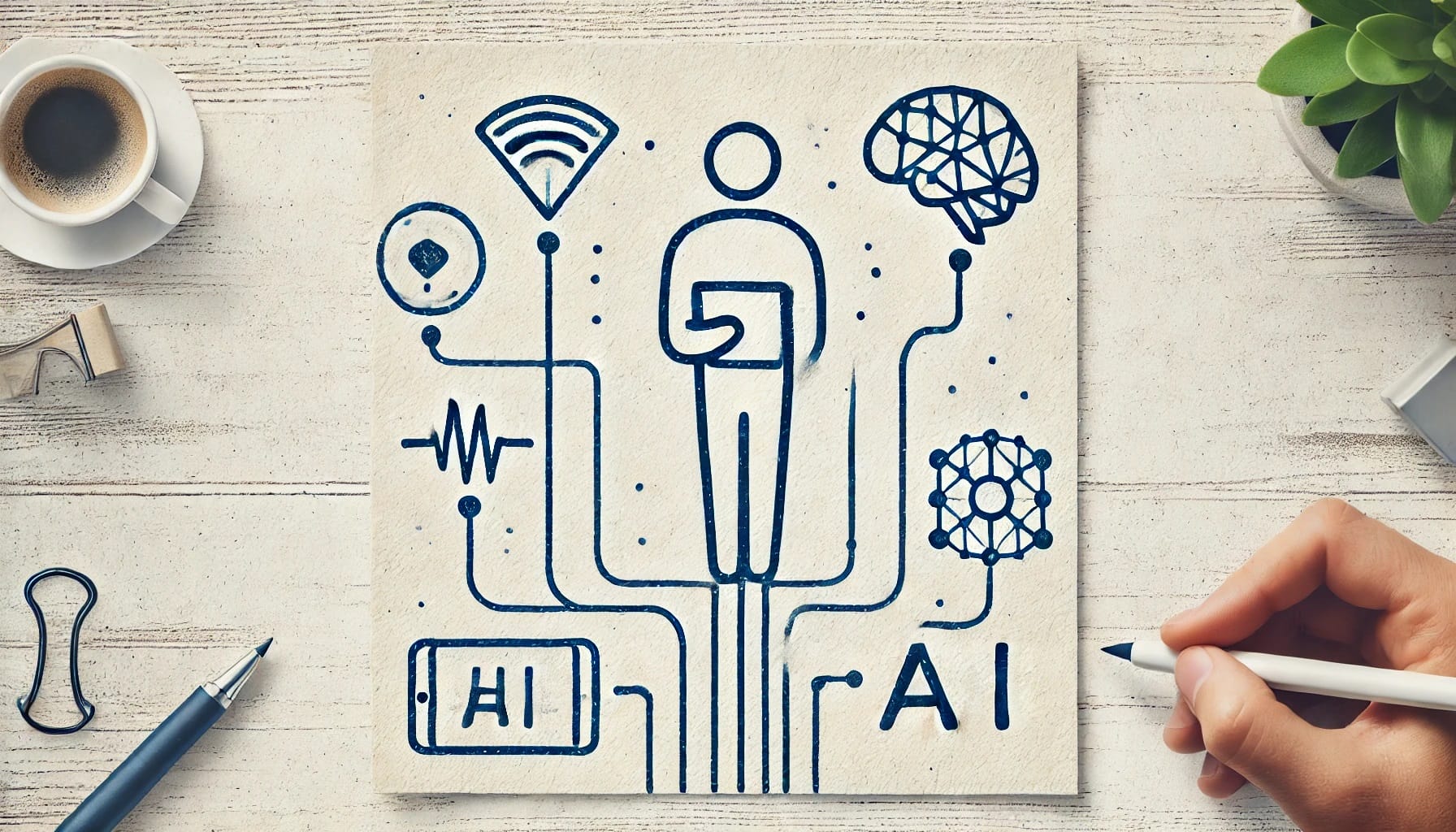
IV. Practical Applications of AI in Enhancing HRV Data Quality
The practical applications of AI in improving HRV data quality extend across various research and clinical settings, making it easier to maintain data integrity in both controlled and real-world environments.
A. Real-Time Monitoring and Quality Control Systems
AI-driven systems can continuously monitor HRV data in real time, flagging any anomalies or quality issues as they occur. This proactive approach allows researchers and clinicians to address data quality problems immediately, rather than discovering them after data collection is complete.
- Example: In clinical settings, AI can be used to monitor HRV data from patients in real-time, automatically detecting and correcting signal artifacts or alerting clinicians to potential data quality issues.
- Applications: These systems are particularly useful in long-term monitoring scenarios, such as in wearable health devices, where continuous data quality management is essential.
B. Improving Data Quality in Multi-Center Studies
AI techniques are invaluable in multi-center HRV studies, where data collection methods and conditions can vary significantly between sites. AI can help standardize data across different locations, ensuring consistency and comparability.
- Example: In a large-scale study involving multiple hospitals, AI can be used to harmonize HRV data collected from different types of ECG devices, adjusting for variations in sampling rates and signal processing methods.
- Applications: This approach helps streamline the data integration process in multi-center trials, reducing variability and enhancing the robustness of study findings.
C. Optimizing Wearable and Sensor-Based HRV Research
Wearable devices are increasingly used for long-term HRV monitoring, but they often face challenges related to data quality, such as inconsistent measurements or environmental interference. AI can optimize data collection from these devices by automatically cleaning and validating the data in real-time.
- Example: AI algorithms can be embedded in wearable devices to automatically remove motion artifacts or correct for sensor drift, ensuring that the HRV data collected is as accurate as possible.
- Applications: This capability is particularly valuable for consumer-grade wearables, which may not have the same level of precision as clinical devices but can still provide meaningful insights when combined with AI-driven data quality management.
By integrating AI into HRV research, researchers can significantly enhance the quality of their data, leading to more accurate analyses and more reliable insights. The next section will discuss important considerations for implementing AI in HRV data quality management, ensuring that researchers can effectively leverage these technologies while addressing challenges related to privacy, interpretability, and resource requirements.
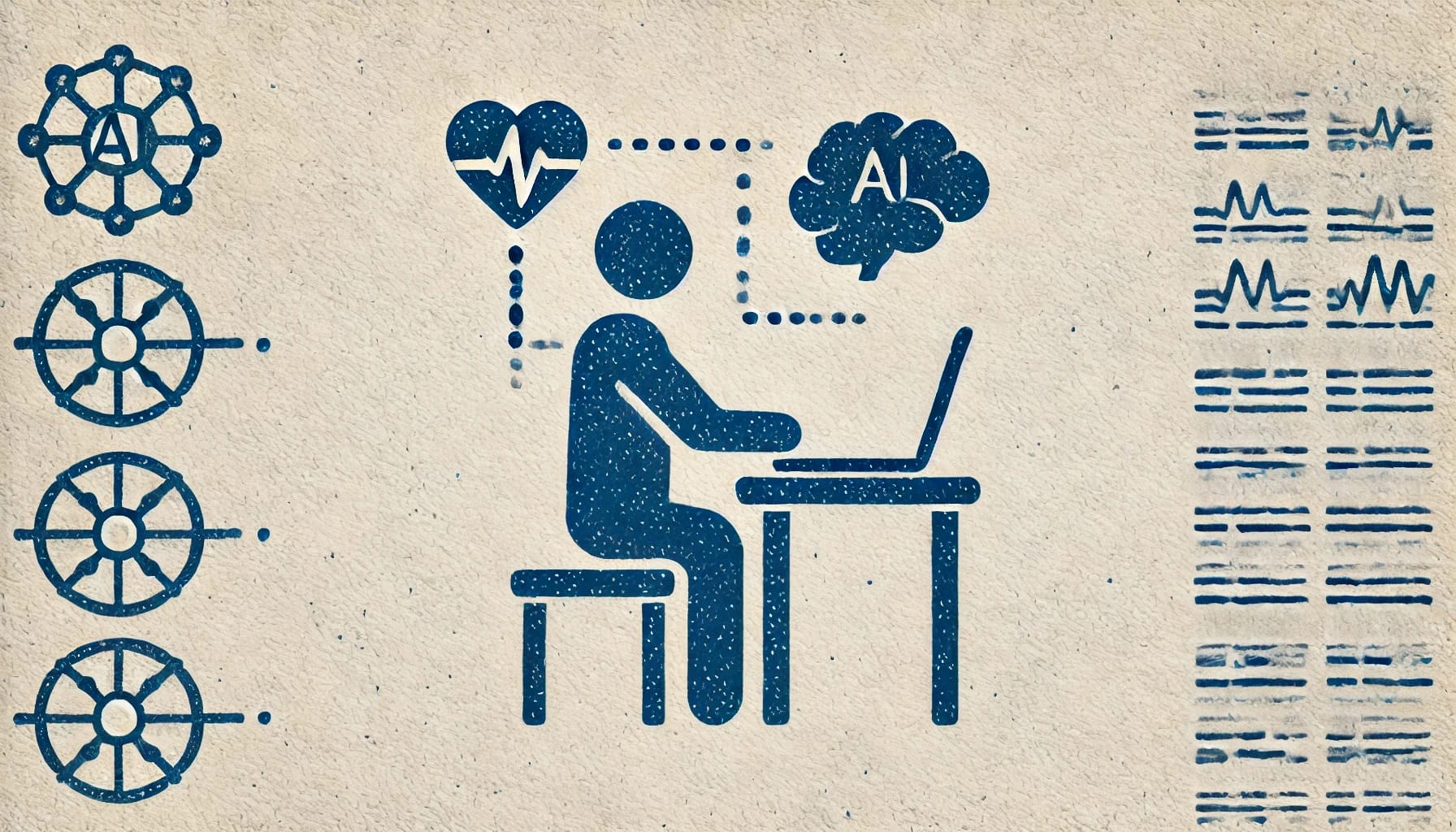
V. Considerations for Implementing AI in HRV Data Quality Management
While AI offers powerful solutions for improving HRV data quality, researchers must carefully consider several factors when implementing these technologies to ensure effective and responsible use.
A. Data Privacy and Security Concerns
The use of AI in HRV data management often involves handling sensitive health data, which raises important privacy and security considerations.
- Data Anonymization: Before applying AI techniques, data should be anonymized to protect participants’ identities. This is especially crucial in studies involving personal health data collected from wearables or clinical devices.
- Data Encryption: Secure data transmission and storage are essential to prevent unauthorized access. Researchers should use robust encryption methods to protect data at rest and in transit, complying with data protection regulations such as GDPR and HIPAA.
- Regulatory Compliance: Researchers must ensure that their use of AI aligns with relevant ethical guidelines and legal standards. This includes obtaining proper consent from participants for data collection and analysis, particularly when AI tools are involved.
Best Practice: Establish clear protocols for data handling, including anonymization, encryption, and regular audits to ensure compliance with privacy and security standards.
B. Balancing Complexity and Interpretability
Advanced AI models, particularly deep learning algorithms, can be highly complex and function as “black boxes,” making it difficult to understand how they arrive at certain conclusions.
- Model Interpretability: In HRV research, where clinical decision-making may be influenced by AI outputs, it is crucial to balance the need for complex models with the requirement for interpretability. Models should provide insights that are understandable and actionable by researchers and clinicians.
- Explainable AI (XAI) Tools: Techniques such as SHAP values, LIME, and other explainable AI approaches can help clarify how AI models make decisions, making it easier to validate their outputs and build trust in their use.
- User-Friendly AI Tools: Choose AI tools and platforms that are accessible and usable by the research team, regardless of their level of expertise in AI. This ensures that AI-driven data quality management remains practical and not overly reliant on specialized skills.
Best Practice: Prioritize AI models and tools that offer a balance of accuracy and interpretability, and utilize explainable AI techniques to make complex models more transparent.
C. Resource and Expertise Requirements
Implementing AI solutions for HRV data quality improvement requires resources, including computational power and specialized knowledge.
- Computational Resources: Deep learning models, in particular, can be resource-intensive, requiring powerful hardware such as GPUs or access to cloud-based computing platforms. Researchers should plan for these needs when designing their studies.
- Technical Expertise: The successful application of AI in HRV research often requires expertise in data science, machine learning, and signal processing. Collaborating with AI specialists or investing in team training can help bridge any skill gaps.
- Cost Considerations: From software licenses to cloud computing fees, the costs associated with AI implementation can add up. Researchers should budget accordingly and explore cost-effective options such as open-source tools or shared computational resources.
Best Practice: Assess the technical and financial requirements of AI implementation early in the study design phase, and explore partnerships or funding opportunities to support these needs.
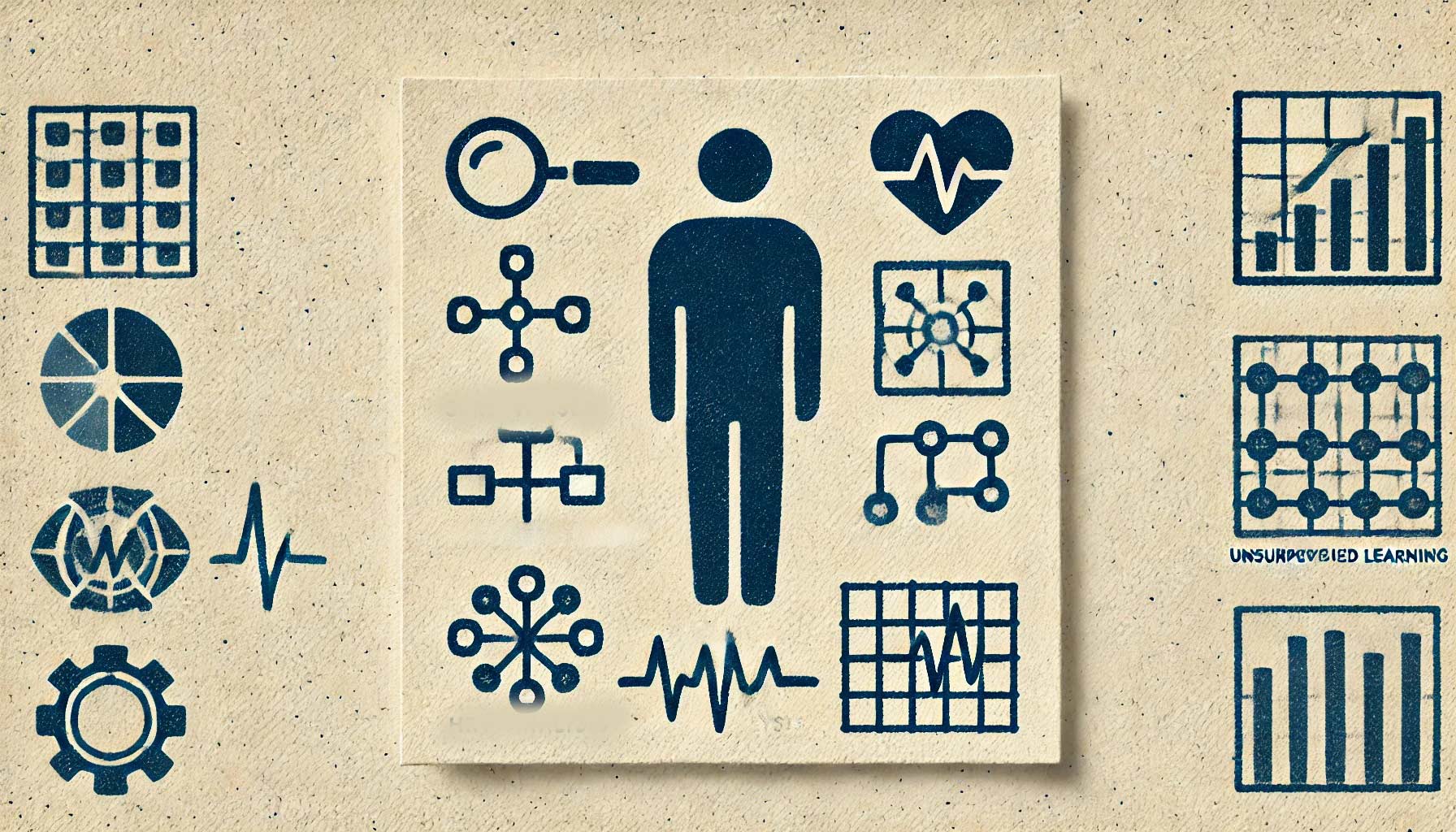
VI. Conclusion
Leveraging AI for Enhanced HRV Data Quality
AI offers transformative potential for overcoming data quality issues in long-term HRV research, providing robust solutions for noise reduction, data imputation, and standardization across diverse data sources. By leveraging AI-driven approaches, researchers can enhance the reliability and accuracy of their HRV datasets, leading to more meaningful insights and better-informed health interventions.
Addressing Challenges and Unlocking AI’s Potential in HRV Research
However, the successful implementation of AI requires careful consideration of data privacy, model interpretability, and resource availability. By addressing these challenges and selecting the right AI tools and techniques, researchers can unlock the full potential of AI to improve HRV research outcomes and contribute to the broader field of personalized health monitoring.
Embracing AI in HRV data quality management not only helps to mitigate common challenges but also paves the way for more advanced, scalable, and impactful HRV studies. As the field continues to evolve, integrating AI into HRV research will be essential for driving innovation and expanding our understanding of autonomic function and cardiovascular health.
Call to Action
📅 If you want to learn more about Fibion’s solution for measuring HRV, do not hesitate to book a video call with our expert Dr. Miriam Cabrita.

🔍 You may also discover our product portfolio on our website: Fibion SENS, Fibion Research, Fibion Vitals, Fibion Sleep, Fibion Emfit and Fibion Circadian, each with its unique set of features and applicability.
Frequently asked questions about this topic:
What are the common data quality issues in long-term HRV research? +
Common issues include signal noise, missing data, and variability in data collection methods, which can compromise the integrity of HRV datasets and affect research outcomes.
How does AI help reduce noise in HRV data? +
AI uses algorithms like deep learning models to differentiate between true HRV signals and noise, enhancing data quality by filtering out irrelevant artifacts and improving accuracy.
What AI techniques are used for handling missing HRV data? +
AI techniques like machine learning regression models, K-Nearest Neighbors (KNN) imputation, and deep learning approaches such as LSTMs can accurately predict and fill missing HRV values.
How does AI standardize HRV data from different sources? +
AI can use techniques like transfer learning and domain adaptation to harmonize HRV data from various sensors and settings, ensuring consistent and comparable results across studies.
What are the practical applications of AI in HRV research? +
AI can be used in real-time monitoring systems, multi-center studies, and wearable devices to continuously improve HRV data quality, providing reliable insights for clinical and research purposes.
What should be considered when implementing AI in HRV data management? +
Key considerations include data privacy, model interpretability, and resource requirements. Ensuring compliance with data protection regulations and selecting user-friendly AI tools are essential for successful implementation.










